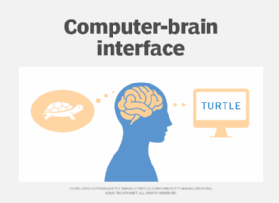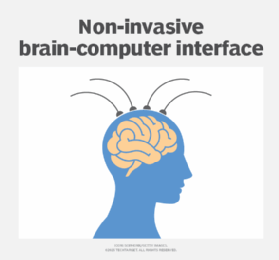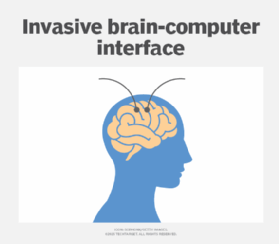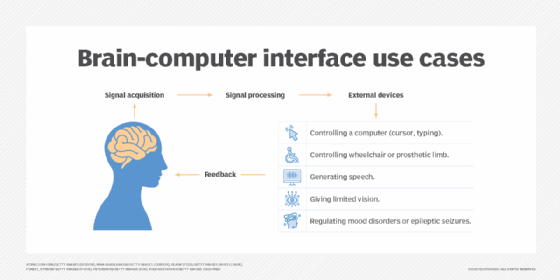What is brain-computer interface (BCI)?
Brain-computer interface (BCI) is a device that translates signals in the brain to control some external activity. For example, they might control a cursor or a prosthetic limb. They might also be called a brain-machine interface. BCI is currently being researched and is targeted at people with disabilities as an adaptive technology.
In BCI, signals in a brain are read directly, without the involvement of the muscular-skeletal system. This means they can be used by people who are otherwise paralyzed or who have certain health conditions. These people might not be able to use other assistive input methods like voice control, eye tracking or sip-puff systems.
While BCI is currently primarily human to computer, some systems operate from computer to person. These systems are for visually impaired people and can translate a camera feed into a signal that can be comprehended by the person's visual cortex to provide limited sight.
What are brain-computer interface components?

A typical BCI will have four major components:
- Signal collection. Uses sensors to gather raw data from the brain.
- Signal processing. Analyzes the raw data and extracts the person's intent and discards signal noise. Machine learning algorithms can help in this process.
- Command translation. Takes the intent and translates it into a simple command that can be used by other programs.
- Perform and output. The command is used to perform and output, such as moving a computer cursor, speech synthesis or powered chair.
How do brain-computer interfaces work today?
Brain-computer interfaces are still relatively rudimentary and cannot directly "understand" what is going on in a person's brain. Instead, a two-way training process is needed to calibrate the BCI and for the person to learn how to use it.
An example might be that the person imagines raising their hand to move a small indicator up many times. Eventually, the computer learns what signals to listen to and which to ignore; similarly, the person's neural plasticity allows them to learn the correct pattern of thought until it can become almost second nature to operate the BCI.
Invasive vs. non-invasive brain-computer interfaces
BCI can be broadly separated into invasive and non-invasive methods.
In non-invasive methods, the signals are read using equipment entirely outside the person's body. Invasive methods require the implanting of a sensor into the person. Invasive methods are much more sensitive and accurate but carry risks of surgery and for the body to reject the implant.
Non-invasive BCI

Electroencephalography (EEG) is the most popular non-invasive BCI method. It uses electrodes placed on the scalp to detect neural activity. Because the skull blocks most signals, only the low-frequency brainwaves can be read this way. Other methods use functional magnetic resonance imaging (fMRI) or functional near-infrared spectroscopy (fNIRS) to detect brain activity. But because these require large machinery and are relatively slow, they are currently for research purposes.
Invasive BCI

Invasive BCI requires surgical implantation of the sensor. The most sensitive implants use microarrays or sensing wires implanted directly in the neural matter. Other less invasive methods use sensors implanted below the scalp or skull but not embedded into the neural matter. A recent research development is using an endovascular sensor threaded through an artery, which can be implanted with only minor surgery.
Several companies are currently developing BCI. Some have had working implants from the early 2000s. Neuralink is currently one of the most talked about BCI developers, but it is a recentcomer to the scene.
Brain-computer interface use cases
Applications of brain-computer interfaces are as follows:
- Controlling a computer.
- Controlling a powered wheelchair or prosthetic.
- Generating speech.
- Giving limited vision.
- Regulating mood disorders or epileptic seizures.

Learn how researchers have developed an AI-based "brain decoder" that can translate brain activity into a continuous stream of text.
